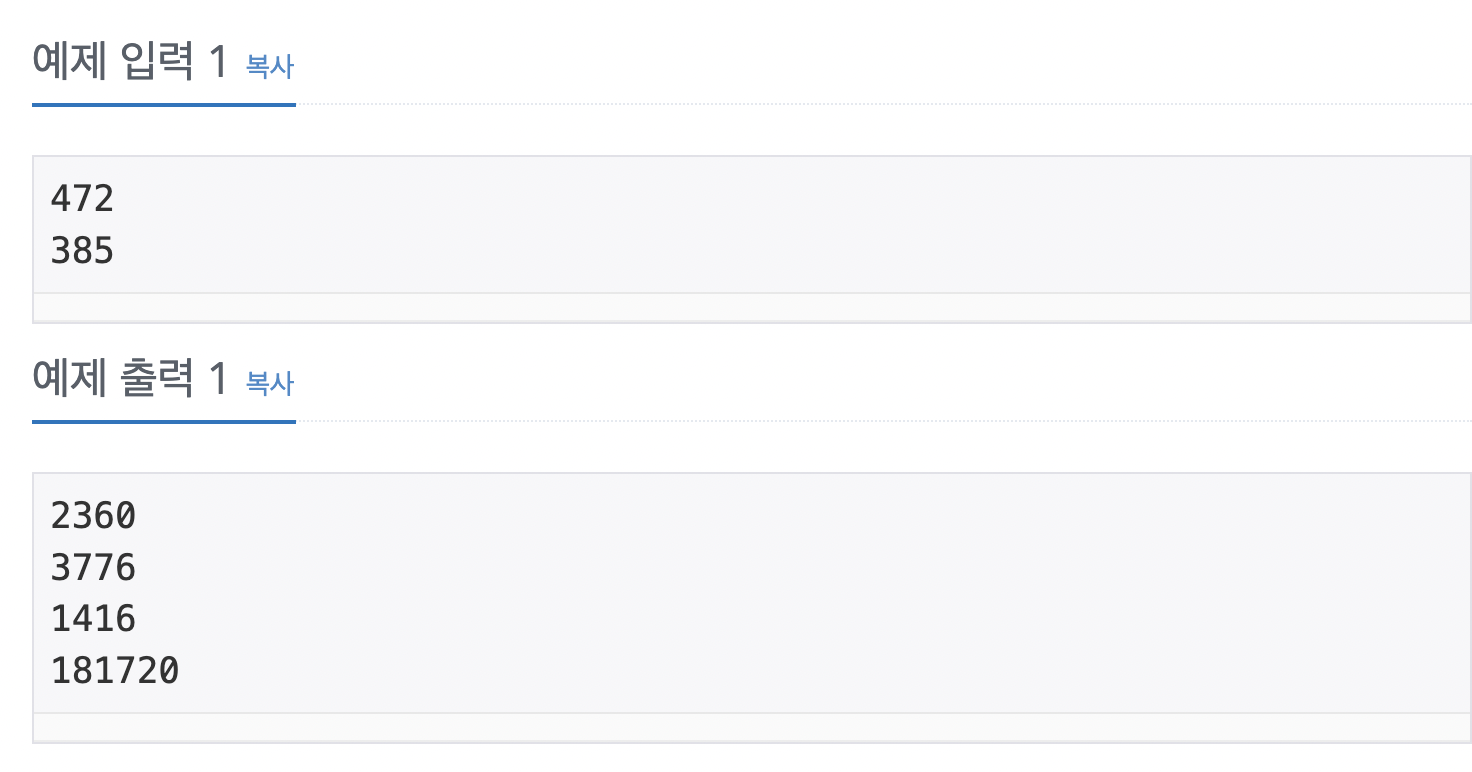

import java.io.IOException;
import java.io.InputStreamReader;
import java.io.BufferedReader;
public class Main{
public static void main(String[] args) throws IOException{
BufferedReader br = new BufferedReader(new InputStreamReader(System.in));
int a = Integer.parseInt(br.readLine());
int b = Integer.parseInt(br.readLine());
br.close();
StringBuilder sb = new StringBuilder();
sb.append(a * (b%10));
sb.append("\n");
sb.append(a * ((b/10)%10));
sb.append("\n");
sb.append(a * (b/100));
sb.append("\n");
sb.append(a * b);
System.out.print(sb);
}
}위와같이 연산을 이용하면 쉽다.
하지만 문자열로 입력받아 charAt()로 하나씩 꺼내 쓰는 방법도 있다.
import java.io.BufferedReader;
import java.io.InputStreamReader;
public class Main {
public static void main(String[] args) {
BufferdReader br = new BufferedReader(new InputStreamReader(System.in));
int a = Integer.parseInt(br.readLine());
String B = br.readLine();
br.close();
System.out.println(A * (B.charAt(2) - '0'));
System.out.println(A * (B.charAt(1) - '0'));
System.out.println(A * (B.charAt(0) - '0'));
System.out.println(A * Integer.parseInt(B));
}
}A는 int, B는 String 으로 입력받고,
B는 charAt()으로 각 자리수를 참조해준다.
뒤에 -'0'을 해주는 이유는 우리가 문자열 인덱스를 사용하기 위해 B를 String으로 선언하였지만,
문자로 저장된 숫자(아스키 코드)가 아닌 숫ㄱ자 그대로를 정수로 쓰기 위함이다.
한편,

위의 것이 BufferedReader를 닫아주는 br.close(); 를 쓰지 않은 것인데, 더 빠르게 나온 이유는
데이터의 크기가 크지 않아서 실행하는 로직 자체가 더 오래 걸리기 때문인 것 같다.
'Programming > 알고리즘' 카테고리의 다른 글
| [백준] 2753 - 윤년 -JAVA[자바] (0) | 2022.11.24 |
|---|---|
| [백준] 1330 - 두 수 비교하기 -JAVA[자바] (0) | 2022.11.24 |
| [백준] 3003 - 킹, 퀸, 룩, 비숍, 나이트, 폰 (0) | 2022.11.23 |
| [백준] 10869번 - 사칙연산 -Java[자바] (0) | 2022.11.22 |
| [백준] 1008번 - A/B JAVA [자바] (0) | 2022.11.22 |



